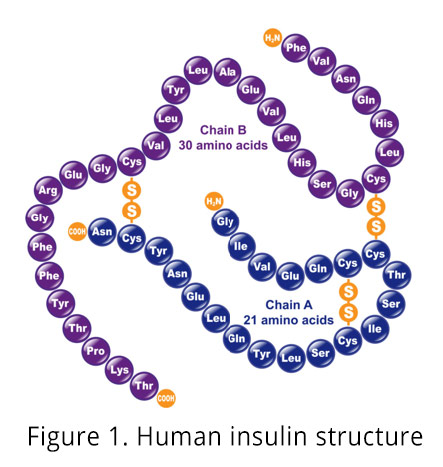
Hello,
In my previous blogs I started a series of communications on macronutrients. We have already spoken about carbohydrates both fat and cholesterol, so today we are going to cover the third and, in my opinion, the most important macronutrient on our list - proteins.
Everyone has heard of them, any athlete knows that we need protein to build muscle and recover, but often people have a wrong idea about what the protein is, they don't know what the roles proteins play in our bodies and how much of protein we need on daily basis. Let's tackle these subjects exactly in this order.
What is protein?
Protein or proteins are a large and a very versatile group of molecules, which I would describe as amino acids and their combinations. That would be my, absolutely non-academic definition, but definitely the easiest way to explain what proteins are. There are 20 amino acids (AA) that can be used by our bodies, likely way more from a chemistry standpoint, but these 20 are the ones we have to focus on as our bodies use only these. They are the simplest building blocks for literally anything in our bodies. When these amino acids are combined in a specific way - using something that we call a peptide bond - they become peptides, which are more complex and these peptides can be classified by the number of amino acids incorporated such as, for example, dipeptides (2 AA) or tripeptides (3 AA). We also have terms like oligopeptides that have literally "few" AA and polypeptides which have "many" AA, when we don't really care about the exact number of AAs included (in the end of the day why would we, eh?). Good example would be insulin, the hormone that regulates sugar levels, which we will definitely talk a lot about in the future (see Figure 1). It has 2 chains, A and B, and they have 21 and 30 AAs, respectively, but it's always easier to say that it's a protein or a (poly)peptide hormone.

One very important thing to mention here is the fact that our DNA, our whole genetic code, only encodes the structure of proteins in our bodies and nothing else. I think, it shows how important proteins are and how essential they are for our survival.
Essential amino acids
You might have heard this term - it simply means that our bodies cannot produce certain amino acids from other AA or non-protein substrates. There are 8 of them (though some sources mention 9 or 10) - isoleucine, leucine, lysine, methionine, phenylalanine, threonine, tryptophan, and valine. It must be noted that some AA are conditionally non-essential, which means that they are not essential under normal conditions, but become essential at certain points in life like growth spurts, recovery from serious illnesses and traumas etc. Good example would be arginine or histidine, which are essential during the periods of growth and become non-essential with age. It's important to note that we must receive at least these 8 AA, but preferably all 20 of them, from our diet in order to sustain our functioning, let alone building muscle and maintaining high level of physical fitness.
What happens when we consume protein?
The process of digestion of protein is quite similar to the rest of the macronutrients - larger pieces of food are mechanically broken down and affected by gastric acid and then smaller chunks of food get into duodenum where they are exposed to bile from liver and pancreatic enzymes, including the ones that break peptide bonds - proteases. The proteases break down all proteins into single AA, which then get absorbed into the blood stream and distributed among the internal organs like sugars and lipids do, but there is one major difference - there is no way for us to store protein and it might be a huge problem, which brings us to the next question.
What do we need protein for and how do we use it?
A large portion of AAs get incorporated into various body structures and we are lucky in a way as lots of tissues in our bodies get constantly remodelled and they do need lots of protein. The rest of the AA, the ones that are not actively used, must be either eliminated through kidneys, which puts an extra load on this organ or converted into something else - some of them can be used for creation of glucose in the process that we have discussed earlier, the gluconeogenesis, but again, not all of them. As you can see, some of the amino acids become a problem when we don't have enough of them - they will put an extra burden on our metabolic systems. The good thing is that our protein turnover is rather fast and we can use up these amino acids rather quickly, especially if we are at the moment of higher demand for them like when we are actively training and building muscle. Another safety mechanism is absorption rate - we cannot absorb too much protein from food, it just happens too slowly. That's the main reason why some bodybuilders must eat several times a day as they need a lot of protein to build muscle, and they must split their protein intake into multiple portions small enough for our digestive tract to handle. We will definitely talk about it on a separate occasion, but I'd like to finish today's blog with the answer to one simple question.
How much protein do we need?
Let's do some math - effectively, every day our bodies break down around 300-500 grams of protein in all tissues and replace it with more or less similar amount of new proteins. By saying more or less I simply mean that if we are building muscle, growing or recovering from a serious illness we would need more dietary protein. If our body doesn't see a point in replacing certain proteins it starts using protein as an energy source and we lose lean body mass. In addition to this process of recycling AA, an average adult completely degrades 80-120 grams of AA per day to the point they can't be used as building blocks for new proteins and these AA must be replenished by the dietary protein. Obviously, if we are losing muscle mass, we need less protein, if we are building muscle, we need more than that. The situation is slightly complicated by the fact that some AAs, the non-essential ones, can be created de novo and some can be converted to glucose and used as an energy source. The very general, empirically established recommendation is to have .8 g of protein per 1 kilogram of body mass (or .36 g per pound) for an average adult.
I will definitely make a special entry on the protein needs for athletes, but for now, I think we've done a pretty good job covering the essentials. My next and the last part of macronutrients review will be dedicated to alcohol, which technically is a carbohydrate, but it holds a special place in our nutrition and metabolism, so I'd like to talk about it separately.
Sincerely Yours,
Dr.Sam
